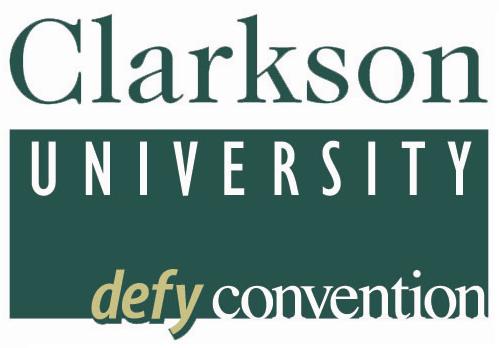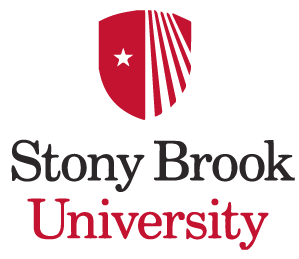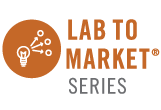|
If you are having trouble viewing this email, view online
|


|
|

|
|
|
|
The Innovation Review is the New York State Science & Technology Law Center's monthly newsletter, bringing information on a variety of economic, business, and technology related legal news as well as highlighting and profiling resources and events across the state.
|
|
|
|
|
|
|
|
|

|
USPTO Launches Enhanced Patent Quality Initiative
The United States Patent and Trademark Office (USPTO) has launched a comprehensive and enhanced Patent Application Alert Service patent quality initiative designed to “fuel innovation and [reduce] needless litigation.” The initiative aims to build confidence in the patent system by improving the quality of the patents, making the system understandable and usable by all inventors, and ensuring that all are treated fairly and professionally throughout the application process. The Federal Register notice of the initiative highlights eleven current quality initiatives and also outlines six proposals for the public’s consideration and feedback.
|
|
|
Email Alerts for Published Patent Applications Offered by USPTO
The U.S. Patent and Trademark Office announced their new Patent Application Alert Service which provides customized, email alerts when patent applications of interest are published. The service is free and open to the public. The system also offers direct access to the published applications that meet a searcher's criteria. After receiving one of these customized email alerts, there's the option to identify prior art for “pre-issuance” submission into these applications. The idea for the service came from a public roundtable held at the USPTO last April where input was solicited about the use of crowdsourcing and pre-issuance submissions to identity relevant prior art.
|
|
|
America Invents Act Sponsors say USPTO Misinterpreted AIA's First-Inventor-to-File Provision's Grace Period
On April 15, two senators and two representatives introduced a bill to override the Patent and Trademark Office’s interpretation of the America Invents Act called the Grace Period Restoration Act. The AIA switched the U.S. from a first-to-invent patent system to a first-inventor-to-file system. Under first-to-invent, anything disclosed by the inventor during the year before filing for a patent was exempted because no other applicant could predate the first person to invent. The purpose of the new bill is to ensure that an inventor has an entire year before filing a patent application to make “public disclosures” of the invention, a provision that is of particular importance to universities. The current regulatory reading creates conflict between researchers needing to publish their findings and university tech transfer offices desiring protection of any intellectual property. The press release announcing the bill stated that the USPTO’s interpretation leads to the “discouragement of scientific research publication.” Bloomberg speculates that this new legislation may be intended as an addition to the Innovation Act currently before the House Judiciary Committee.
|
|
|
House Judiciary Committee Hears Requests to Add AIA-Related Innovation Act Provision
On April 14, at a House Judiciary Committee hearing, stakeholders representing patent owner interests asked for provisions to the Innovation Act that favored patent owners in proceedings conducted by the Patent Trial and Appeal Board (PTAB). The Innovation Act is an attempt by Congress to curtail some of the abuses by patent trolls, or entities that use patents as a weapon against other businesses to receive royalties without actually adding any value. PTAB and its post-grant opposition proceedings were instituted under the America Invents Act (AIA) to help combat patents of dubious quality. However, patent owners believe that PTAB proceedings are skewed more in favor of patent challengers and appealed for more balance. The panel was ended with a suggestion from one of its members to tighten the standing requirements for who could file a petition to initiate a post-grant opposition proceeding. Concerns about additional unintended consequences of the new bill were also raised about some of the litigation-related provisions.
|
|
|
|

|
Clarkson University's Shipley Center Announces Commercialization Partnership
Clarkson University and Protoscale Inc. have entered a partnership in order to continue the mission of accelerating the commercialization of Clarkson University innovations into the marketplace. The Shipley Center at Clarkson University is known for its expertise in turning business ideas into real products with its proof of concept prototypes. The new partnership with Protoscale will expand the school’s services into contract manufacturing, as Protoscale is a company that connects startups with manufacturing partners and advises on scalable design.
|
|

|
Stony Brook University's Center for Biotechnology Receives $9 Million for Commercialization Hub
Stony Brook University’s Center for Biotechnology is one of three “proof-of-concept” hubs selected by the National Institute of Health (NIH) to receive a three-year $3 million grant through the SUNY Research Foundation. The grant is part of the NIH’s Research Evaluation and Commercialization Hub (REACH) program and will establish the Long Island Bioscience Hub (LIBH). The new hub, led by Stony Brook, is intended to “foster the development of biomedical discoveries, including therapeutics, preventatives, diagnostics and tools and devices and commercial potential.” It will capitalize on Stony Brook’s strengths in technology commercialization while also establishing strategic partnerships and providing education and mentoring services to faculty innovators. Stony Brook’s participation in the REACH program will also make use of partnerships with the U.S. Food and Drug Administration, the U.S. Patent and Trademark Office, and the Center for Medicare and Medicaid Services.
|
|
|
|
Educational Opportunities
|
|
|
|

|
Lab to Market Spring Webcast Series
On April 29, the NYS STLC hosted the first webcast of the Lab to Market spring webcast series featuring Christopher J. Bonner, of counsel with Hiscock & Barclay. In his talk, he described how securities laws affect financing for small and new companies and also provided an overview of the latest developments from the Securities and Exchange Commission. Footage of the webcast along with a slide deck will be available on our website within the next two weeks. The next webcast, taking place on May 20, will feature John W. Boger, a Partner with the IP Boutique Law Firm of Heslin, Rothenberg, Farley & Mesiti P.C. To keep up with future webcast dates and view older ones, please check our webcast page.
|
|
|
If you no longer wish to receive email communications such as this from the New York State Science & Technology Law Center, unsubscribe here.
310 Dineen Hall • Syracuse, NY 13244 • nysstlc@law.syr.edu • nysstlc.syr.edu
|
